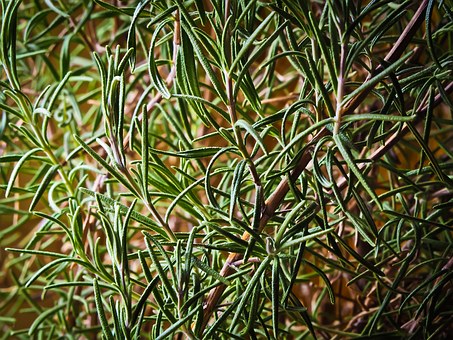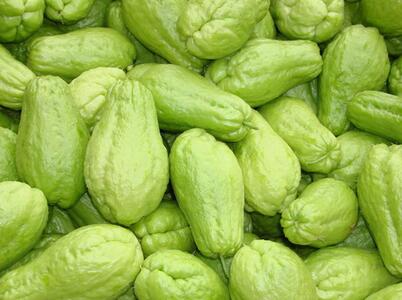What is perilla? What are the effects and effects? How to plant it?
Perilla is an annual herb with round or oval leaves, 3-9.5cm in length and 2-8cm in width, with coarsely serrated edges. It often blossoms from July to August and bears fruit from September to October. Like to grow in a warm and humid climate, grow exuberantly in a sunny environment, and the yield is relatively high. This plant is easy to survive and is widely cultivated in China's north and south provinces, as well as in India, Japan, Korea, Indochina and other overseas countries. Perilla has been planted in China for about 2000 years. With the continuous change of society, perilla is more and more widely used. In our life, we often make the leaves of perilla into different delicacies, spices, oil, medicine and so on.

[efficacy and effect of Perilla frutescens]
In recent years, perilla has become a kind of multi-purpose plant which has attracted worldwide attention and has high economic value because it contains many unique active substances and nutrients which are very beneficial to the human body. In daily life, people often use the tender leaves of perilla to soak water, cook soup, pickle to eat, etc., delicious and fragrant.
The leaves, stalks and fruits of perilla can all be used in medicine, and perilla has high medicinal value. Perilla leaves can disperse surface cold, strong sweating power, used for wind-cold symptoms, see aversion to cold, fever, no sweat and other symptoms, often used with ginger; if the symptoms are both qi stagnation, it can be used with Rhizoma Cyperi, tangerine peel and so on. Perilla leaves in Xingqi width are used for spleen and stomach qi stagnation, chest tightness and vomiting.
The whole perilla can also be used to distilled perilla oil, and its seeds can also be used to make perilla oil. α 2 linolenic acid in perilla oil is one of the essential fatty acids for human body. it can reduce blood lipid, blood pressure, inhibit platelet aggregation and reduce thrombosis. it can effectively prevent and treat cardiovascular disease and prevent heart disease and senile dementia. eating perilla oil has obvious effect on the treatment of coronary heart disease and hyperlipidemia.
[perilla planting]
Perilla has strong adaptability, lax soil requirements, good drainage, sandy soil, loam, clay loam, front and back house, ditch edge, fertile soil cultivation, good growth. Vegetables are the best crop in the previous crop. Fruit trees can be planted under young forests.
Perilla is propagated by seeds, divided into direct seeding and seedling transplanting.
Live broadcast
Spring sowing, the difference in sowing time between the north and the south is one month, March in the south and mid-late April in the north. Direct seeding in the border strip sowing, according to the row spacing of 60 cm ditch depth of 2-3 cm, evenly sow the seeds into the ditch, sow and cover the thin cheese. Hole sowing: row spacing 45 cm, plant spacing 25-30 cm, shallow cover soil. Watering immediately after sowing, keep moist, sowing rate 15-18.75 kg per hectare, direct seeding labor-saving, fast growth, early harvest, high yield.
Raising seedlings
This method is used in arid areas because of insufficient seeds and poor water conservancy conditions. The seedbed should choose a place with sufficient and warm light, apply farm fertilizer, and add the right amount of calcium superphosphate or plant ash. Pour water through the border in the first ten days of April, sow seeds after the water seeps, cover 2-3 cm of shallow soil, keep the bed moist, and seedlings will emerge in about a week. After the seedlings are too dense, the seedlings are often watered for weeding, with a height of 3-4 cm. When 4 pairs of leaves grow, they will be planted in the wheat field on a cloudy day or in the evening after wheat harvest. On the first day of planting, the seedling ground will be watered thoroughly.
When transplanting, the root is easy to survive and grow as it is pulled out. Plant distance 30 cm, ditch depth 15 cm, arrange the seedlings, cover the soil, water or thin human and animal feces and urine, loosen the soil and preserve soil moisture after 1-2 days. About 150000 seedlings are planted per hectare and watered once every 2-3 days in dry weather. After that, watering is reduced and squatting seedlings are carried out to make the roots grow.
[land selection and land preparation]
Loose soil
Weeding should be done frequently before plant growth and ridge sealing, and attention should be paid to inter-seedling and weeding in direct seeding area. when the height of strip sowing seedlings is 15 cm, the seedlings should be fixed by 30 cm, and the excess seedlings should be used for transplanting. The plants in the direct seeding field grow fast, and if the density is high, the plants grow too long, and few of them are unbranched or branched. Although the height of the plant can be reached, there are fewer leaves at the bottom of the plant, and the light and air are not good, which affects the yield of leaves and perilla oil. At the same time, there are more stems and fewer leaves, which also affects the specification of the whole grass, so the seedlings are not early. The seedling field was loosened and weeded twice from planting to ridge closure.
Temperature
Requirements for environmental conditions Perilla prefers a warm and humid climate. The seeds can germinate when the ground temperature is above 5 ℃, and the suitable germination temperature is 18-23 ℃. It can endure low temperature of 1-2 ℃ at seedling stage. The plant grows slowly at lower temperature. It grows vigorously in summer. The suitable temperature during flowering is 22-28 ℃, and the relative humidity is 75% Mel 80%. More resistant to moisture, strong resistance to waterlogging, not resistant to drought, especially in the product organ formation period, such as too dry air, thick and hard stems and leaves, more fiber, poor quality. It has a wide adaptability to soil and can grow in shady places.
Topdressing
Perilla frutescens for a long time is relatively short, the whole grass can be harvested two and a half months after planting, and the whole grass is used as medicine, so it is mainly nitrogen fertilizer. Concentrate fertilizer before closing ridges.
Direct seeding and nursery land, dressing fertilizer when seedling height is 30 cm, applying 15000-22500 kg of human feces and urine or 112.5 kg of ammonium sulfate per hectare, calcium superphosphate 150kg, loosening soil and cultivating soil to bury fertilizer. Apply fertilizer again before the ridge is closed for the second time, the method is the same as above. But be careful not to touch the leaves this time.
irrigation
After sowing or transplanting, it will not rain for several days, so it should be watered in time. Pay attention to drainage in the rainy season, dredge the operation road, and prevent stagnant water from disorderly roots and defoliation.
Harvest and processing
Perilla should be harvested in sunny days, with sufficient aroma and convenient drying. Perilla leaves should be harvested from late July to early August, when perilla is not in bloom.
Perilla peduncle: before blooming in early September, the inflorescence is harvested when it grows, cut from the root with a sickle, hang the plant upside down in a ventilated shady place to dry, and then lay down the leaves for medicinal use.
Perilla seeds are harvested when the seeds and fruits are ripe from late September to mid-October. Cut off the ear or the whole plant, tie it into small handfuls, sun-dry the seeds for a few days, and produce 1125-1500 kg per hectare.
While collecting seeds, pay attention to the selection and retention of improved varieties. Select plants with strong growth and high yield, wait until the seeds are fully mature before harvesting, drying and threshing for seed use.
Time: 2019-04-12 Click:
- Prev

What's the difference between rosemary and thyme? How do you keep rosemary?
Rosemary alias the dew of the ocean. Evergreen shrub having erect gray-green narrowly pointed leaves that emit pine scent and have been regarded as memory-enhancing herbs since ancient times. Light blue flowers bloom in spring and summer. Rosemary, native to the Mediterranean coast, is an evergreen shrub with small blue flowers in summer.
- Next

When will bergamot melon blossom and bear fruit? What are the planting methods?
Bergamot melon is a new variety of vegetables, which is deeply loved by people because of its medicinal and nutritional value. For growers, if they want to grow bergamot melon well, they must know the method. And for foodie, the bergamot will also pay close attention to when it will blossom and bear fruit.
Related
- Fuxing push coffee new agricultural production and marketing class: lack of small-scale processing plants
- Jujube rice field leisure farm deep ploughing Yilan for five years to create a space for organic food and play
- Nongyu Farm-A trial of organic papaya for brave women with advanced technology
- Four points for attention in the prevention and control of diseases and insect pests of edible fungi
- How to add nutrient solution to Edible Fungi
- Is there any good way to control edible fungus mites?
- Open Inoculation Technology of Edible Fungi
- Is there any clever way to use fertilizer for edible fungus in winter?
- What agents are used to kill the pathogens of edible fungi in the mushroom shed?
- Rapid drying of Edible Fungi

